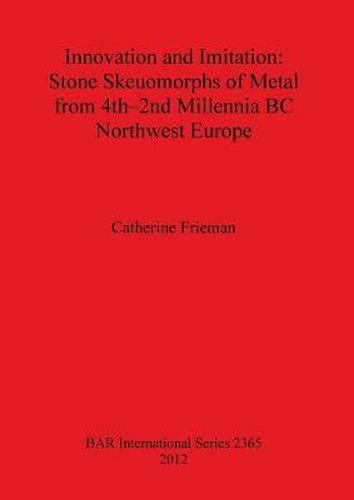Readings Newsletter
Become a Readings Member to make your shopping experience even easier.
Sign in or sign up for free!
You’re not far away from qualifying for FREE standard shipping within Australia
You’ve qualified for FREE standard shipping within Australia
The cart is loading…






This title is printed to order. This book may have been self-published. If so, we cannot guarantee the quality of the content. In the main most books will have gone through the editing process however some may not. We therefore suggest that you be aware of this before ordering this book. If in doubt check either the author or publisher’s details as we are unable to accept any returns unless they are faulty. Please contact us if you have any questions.
In this study of prehistoric innovation, the author argues that a range of technologies and practices need to be considered in order to place innovation into the pre-existing social and technological systems in which it functioned and to assess the means by which it was accepted and valued. In particular the study focuses on how archaeological interpretations of stone objects and stone-working can help understand the adoption and continued presence of metal and metallurgy in prehistoric Europe. The author compares traditionally identified stone skeuomorphs -that is, meaningful imitations -of metal with their putative prototypes. Three separate corpora of these stone skeuomorphs have been identified: polished stone shafthole axes from the Netherlands and surrounding areas, identified as copies of perforated, copper axes; flint daggers from Jutland, identified as copies of bronze, metal-hilted daggers; and jet spacer-plate ornaments from the British Isles, Ireland and Brittany, identified as copies of hammered gold lunulae.
$9.00 standard shipping within Australia
FREE standard shipping within Australia for orders over $100.00
Express & International shipping calculated at checkout
This title is printed to order. This book may have been self-published. If so, we cannot guarantee the quality of the content. In the main most books will have gone through the editing process however some may not. We therefore suggest that you be aware of this before ordering this book. If in doubt check either the author or publisher’s details as we are unable to accept any returns unless they are faulty. Please contact us if you have any questions.
In this study of prehistoric innovation, the author argues that a range of technologies and practices need to be considered in order to place innovation into the pre-existing social and technological systems in which it functioned and to assess the means by which it was accepted and valued. In particular the study focuses on how archaeological interpretations of stone objects and stone-working can help understand the adoption and continued presence of metal and metallurgy in prehistoric Europe. The author compares traditionally identified stone skeuomorphs -that is, meaningful imitations -of metal with their putative prototypes. Three separate corpora of these stone skeuomorphs have been identified: polished stone shafthole axes from the Netherlands and surrounding areas, identified as copies of perforated, copper axes; flint daggers from Jutland, identified as copies of bronze, metal-hilted daggers; and jet spacer-plate ornaments from the British Isles, Ireland and Brittany, identified as copies of hammered gold lunulae.